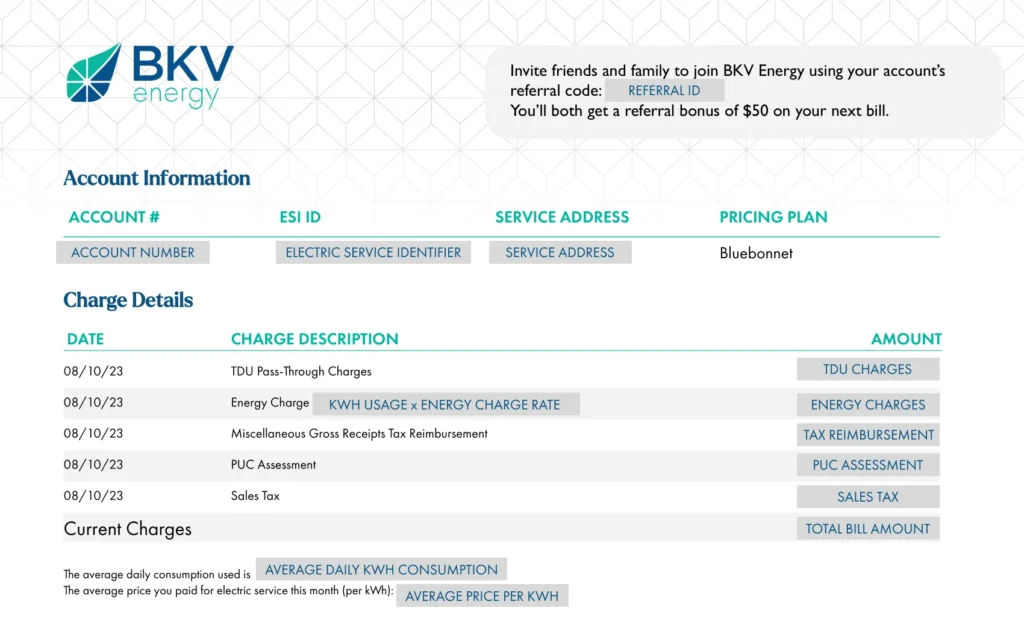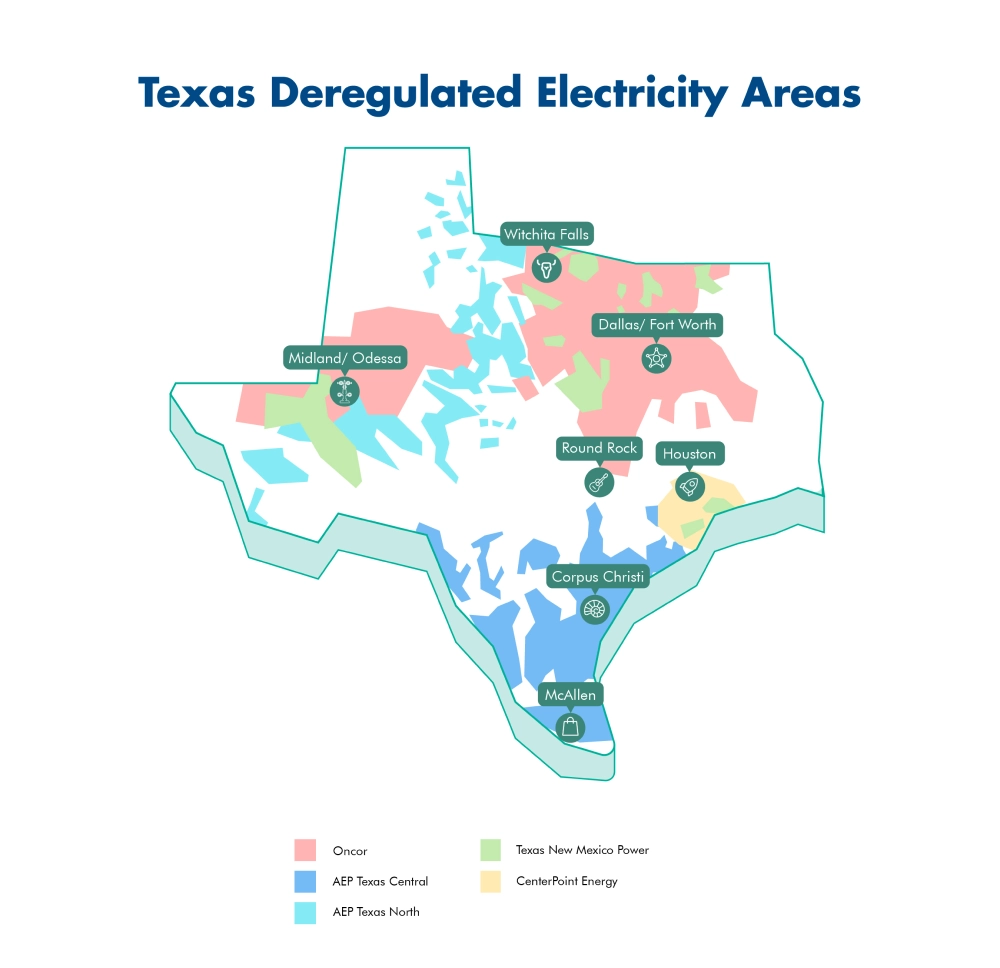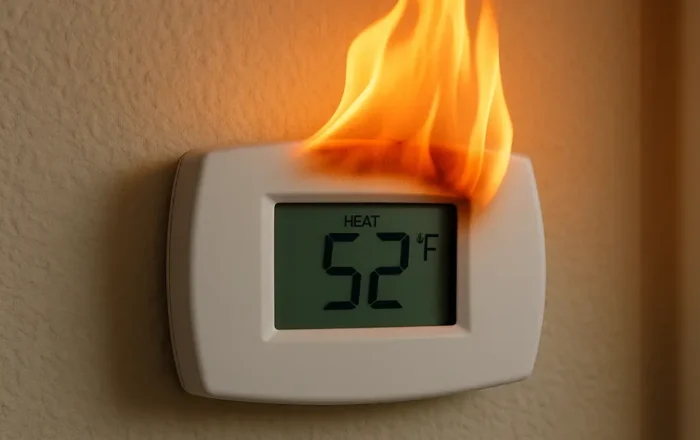Is My Thermostat Broken?
5 minute readHow to diagnose a faulty thermostat, fix common issues, and know when it’s time for a replacement.
Home > Blog > How to Calculate Your Electric Bill – Calculator Included!
5 minute read • Last update August 2024

Learning how to calculate or estimate your electricity bill is a great way to understand your home’s energy consumption, the costs associated, and how to reduce those costs. You can calculate your Texas electric bill by multiplying your kWh usage by the sum of your energy cost and TDU delivery charges listed in your Electricity Facts Label.
Find out how your energy bill stacks up against the average in Texas.
If you would rather not do the math yourself, feel free to use our custom bill estimation calculator.
Here is the equation to calculate the bill of a simple fixed rate energy plan:
Energy Bill = kWh Usage x (Energy Rate + TDU Delivery Rate) + TDU Monthly Fee
Let’s take a real example of a BKV Energy energy plan to see how the bill estimates play out at 500, 1000 and 2000 kWh.
Here is the equation to calculate the bill of a free nights electricity plan (let’s operate under the assumption that your electricity is free 40% of the time):
Energy Bill = 60% x kWh Usage x (Energy Rate + TDU Delivery Rate) + TDU Monthly Fee
Let’s look at another real life example from TXU Energy to see how this calculation plays out. This plan also included a $9.95 monthly base fee.
You can find the equation needed to calculate the bill of a free weekends plan below (in this situation, we assume that your electricity is free 30% of the time):
Energy Bill = 70% x kWh Usage x (Energy Rate + TDU Delivery Rate) + TDU Monthly Fee
Here is another real life example from a Reliant Energy contract.

If you’re unfamiliar with the meanings of each of the charges and terms on your energy bill, we’re here to help.
Your kWh usage or consumption measures exactly how much electricity you used in your home to power your lights, appliances, television, heating and cooling, and more. The lower your energy usage, the lower your bill and vice versa.
Learn how to calculate kilowatt hours.
The energy rate is the price per kWh that you pay to your retail electricity provider. Depending on the type of plan you are enrolled in, the energy rate may vary depending on how much electricity you use. Check your EFL for those details.
The TDU delivery rate is the price per kWh that you pay directly to your utility company for the management and maintenance of the power lines and other infrastructure responsible for sending the electricity to your home from the power plant. Retail electricity providers pass 100% of this cost directly to the utility company. These rates are determined solely by the utility company and approved every six months by the Public Utility Commission of Texas (PUCT).
In addition to the kWh rate, TDUs also charge a flat monthly fee to cover more of the management and maintenance of electricity infrastructure in your region.
Learn more about TDU regions and their charges.

There are two ways to figure out how much electricity you will use in a given month in your home.
Follow these steps to estimate how many kilowatt hours your appliances and devices require.

Now that you know the different charges that make up your energy bill and the equations to estimate the cost of electricity, you have everything you need to know to better budget for your monthly spending. Additionally, you can apply this math when you are shopping for your next electricity plan.
Use the details from the Electricity Facts Label and compare the rates against your historic usage to see how much you would’ve spent. If your bills would have been higher throughout the previous contract at these new potential rates, we do not recommend signing up for that plan.
As indicated in the above real examples of electricity bill calculations, you can see that simple fixed rate plans lead to overall lower energy bills compared to gimmicky plans like free nights and free weekends plans. The same goes for other types of gimmicky plans such as those with base fees, bill credits, and plans designed for charging electric vehicles.
If you’re interested in a simple fixed rate energy plan, enter your zip code below to explore BKV Energy’s electricity plans available in your area. Rates vary by location.
Graham Lumley, Digital Marketing Manager at BKV Energy, leads digital and traditional marketing strategies, focusing on educating Texans about the state's deregulated energy market. With over 8 years of marketing experience, he creates content to help consumers understand and save on their energy bills, bringing a fresh and dynamic approach to the industry.

How to diagnose a faulty thermostat, fix common issues, and know when it’s time for a replacement.

Ceiling fans use less electricity than air conditioners, offering an efficient, low-cost way to stay cool year-round in Texas
Get $50 off your electric bill!
Use code BKVEJOINUS50
Enter your zip code to shop BKV Energy's affordable, fixed-rate Texas electricity plans. Use the promo code for $50 off your electric bill.